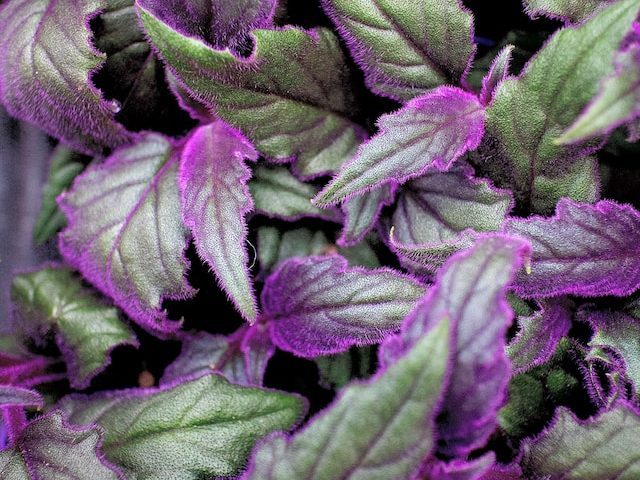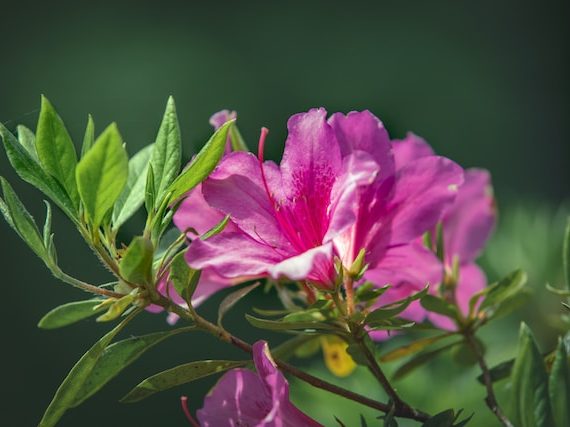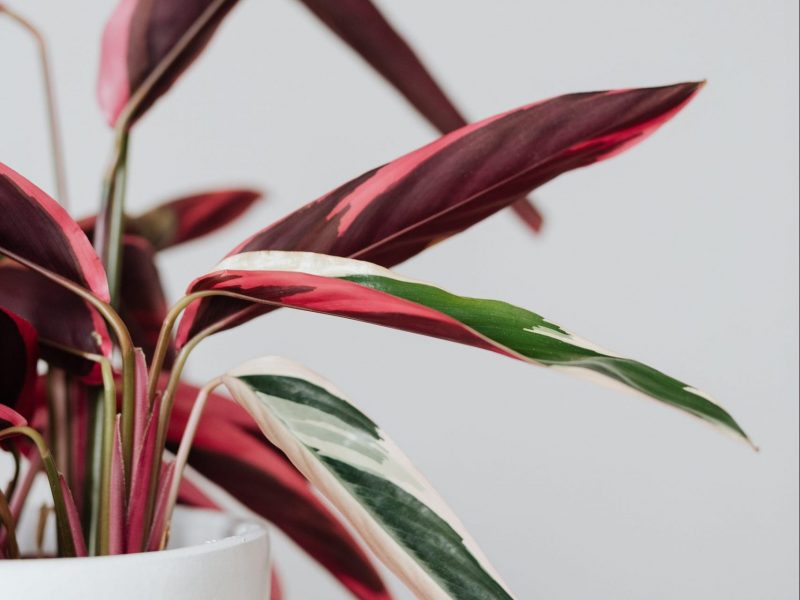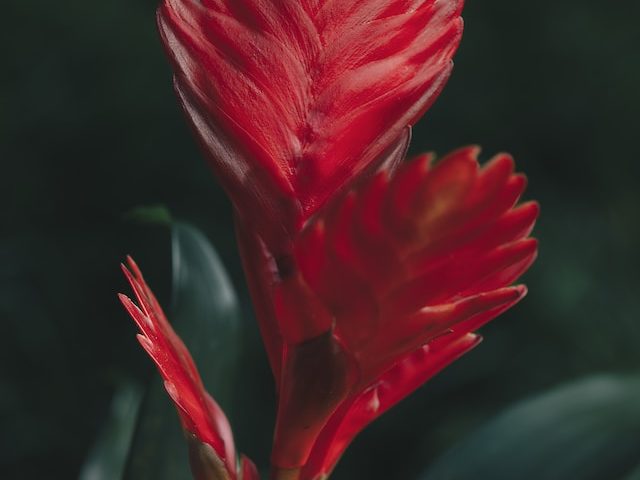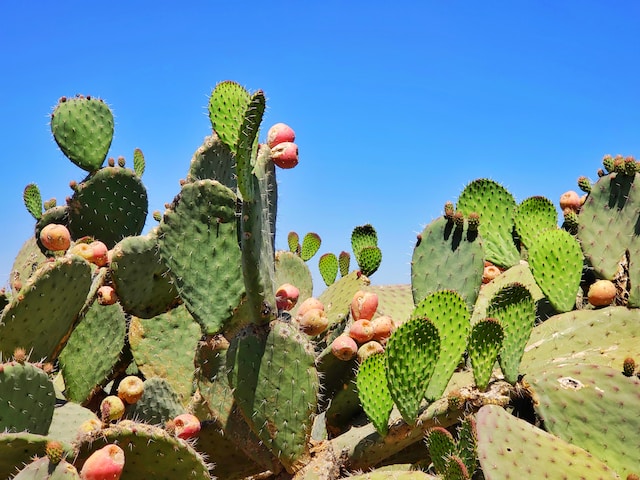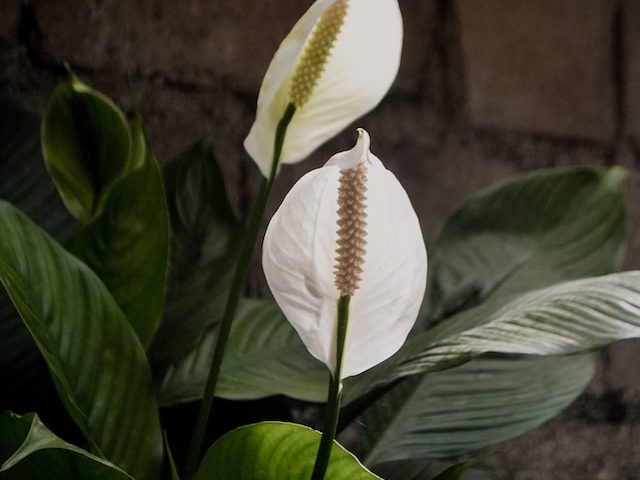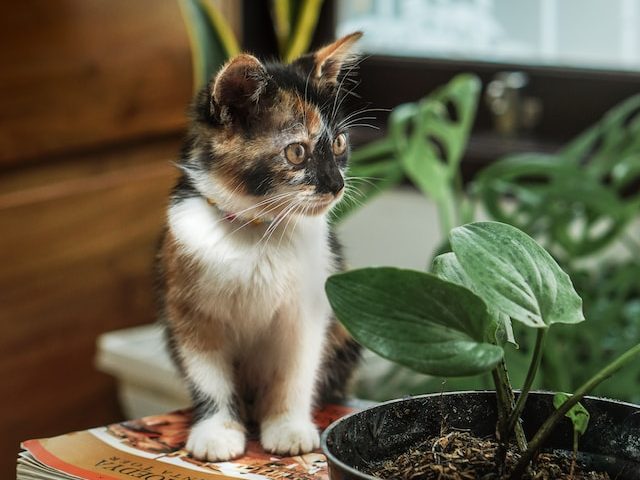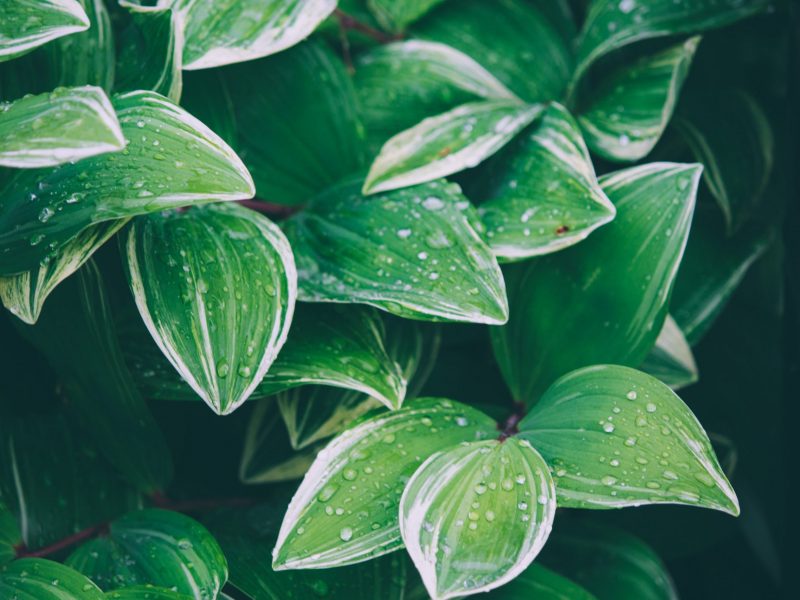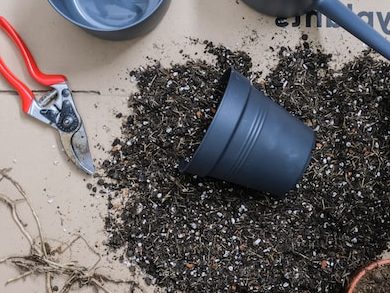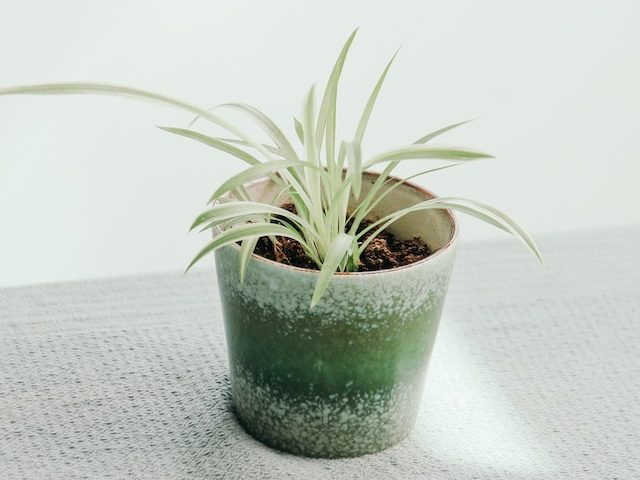Variegated Pothos Plant
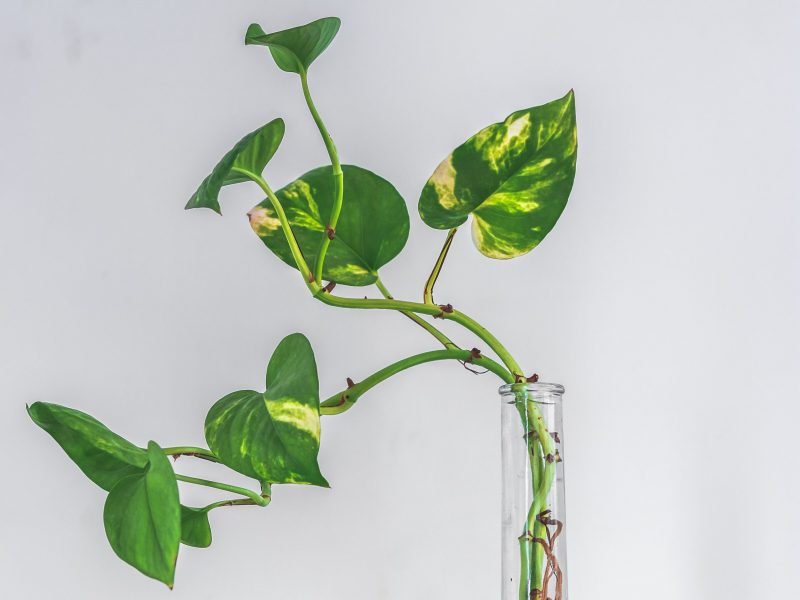
The Devil’s Ivy is one of our all-time favourite houseplants as they are easy to care for and look incredible cascading out of their pot.
Native to Indonesia, South East Asia and the Solomon Islands, the Devil’s Ivy (Pothos plant) is a trailing vine with beautiful thick heart-shaped leaves. The leaves are commonly variegated with splashes of light green, yellow and cream throughout the leaves.
The Devil’s Ivy is commonly known simply as a Pothos plant but also goes by the names of Golden Pothos and Devil’s Vine. It gets the name Devil’s Ivy because it’s so hard to kill and will thrive even in low-light areas. This makes it a great beginner houseplant or a good choice for offices, restaurants and retail spaces.
How to Care for a Devil’s Ivy
The great thing about the Pothos plant is that it is a very low-maintenance plant and can adapt to and thrive in a range of environments. From bright light to low light, your plant will stay live! The only thing to note is that you will often lose the variegation in the new leaves if your plant isn’t getting enough sunlight.
They also really aren’t fussy when it comes to their watering routine as they can survive with quite dry potting mix but also won’t succumb to root rot very quickly if accidentally overwatered once in a while. This is because they have a very solid and thick root system.
You’ll find detailed care tips and information below on how to care for your Pothos as well as treat and diagnose any issues.
Devil’s Ivy Overview
Origin: Indonesia, South East Asia and the Solomon Islands
Latin Name: Epipremnum aureum
Common Name(s): Pothos, Golden Pothos, Devil’s Ivy, Devil’s Vine
Plant Family: Araceae
Difficulty Level: Easy
Appearance: Variegated heart-shaped leaves along a thick vine
Length and Size: Indoors will reach up to 8 feet (2.5 meters) in length but in its native environment can grow to 66 feet (20 meters)
Growth Rate: Fast
Flowering: Rare to bloom when grown indoors
Pruning: Regular pruning will encourage new growth. Also, be sure to prune dying or dead leaves.
Cleaning: Regular dusting to prevent a build-up on the leaves.
Light Requirements: Bright, indirect light
Water Requirements: Weekly watering during summer but cut back in winter.
Best Soil: Well-draining qualities
Ideal temperature: 65-80°F (18-26°C)
Fertilizing Routine: Apply a well-balanced 10-10-10 fertilizer every 1-2 months during the growth period.
Ideal Humidity Level: 45-60% humidity
Propagation: Very easily propagated through vine cuttings
Repotting Frequency: Every 2-3 years
Toxicity: Contains insoluble calcium oxalate crystals which are toxic for pets and humans when ingested
Risk of Pests: Rare but watch out for mealybugs, scale insects, spider mites and thrips.
Common Problems: Leggy growth, brown or yellow leaves
Devil’s Ivy Appearance
They are known and loved for their heart-shaped leaves along a thick tropical vine. They are naturally climbing plants but will trail without anything to climb onto.
Each type of Pothos plant will have a slightly different variegation but with the right care and environment, you’ll see streaks of different shades of green, yellow, white and silver.
Difficult Level
Pothos plants are very low maintenance plants because they are pretty adaptable to a wide range of environments. Not only can they thrive in a range of sunlight levels, but they are often forgiving to a bit of over or underwatering.
They can also adapt well to temperature and humidity changes so you don’t need to worry too much about these factors. This is what makes the Devil’s Ivy perfect for beginner plant parents.
Devil’s Ivy Height and Size
When grown indoors as a potted plant, Devil’s Ivy vines will commonly reach a mature size of 8 feet (2.5 meters) in length. However, in their native environment, the vines can grow up to 66 feet (20 meters) in length.
Growth Rate of a Devil’s Ivy
The Devil’s Ivy is one of the fastest-growing houseplants which makes caring for them super rewarding. They will always have a new leaf growing at the end of each vine during the warmer months of the year and you’ll often see new growth during autumn and winter too which is rare for houseplants. It also makes the Devil’s Ivy a great plant to propagate as they grow roots and new leaves pretty quickly.
Flowers on a Pothos Plant
When grown indoors, it’s extremely rare for a Devil’s Ivy to produce flowers. However, in their natural environment, mature Pothos plants can occasionally produce cream and purple-coloured flowers. These flowers will only last a few days before wilting and are rarely spotted.
Pruning your Devil’s Ivy
Throughout the year, your Devil’s Ivy may produce offshoots with very few leaves which tend to look a little bare and leggy. This commonly happens in winter when temperatures are lower and your plant isn’t receiving as much light. However, it can also happen at other points in the year if things aren’t right.
We recommend pruning these leggy vines back to give your plant a fuller look and help it concentrate on producing new healthy growth.
You should also be pruning any dying, wilting or dead leaves from your plant. Once the leaf has discoloured, there is no going back to the beautiful green variegated colour. Dead leaves will eventually fall off your plant so pruning can help to divert that wasted energy to growing new leaves.
Cleaning your Devil’s Ivy
As they have flat leaves, regular dusting is important to do when caring for a Pothos. There are 3 main reasons why you want to avoid a dusty plant. Firstly, even a very thin layer of dust prevents some sunlight from getting to your plant which reduces the level of photosynthesis it is able to complete.
Secondly, dust particles can clog up the tiny little pores on the leaves which your plant uses to ‘breathe’ and lastly cleaning the leaves can make them look fresher, brighter and shinier.
The best way to clean your Devil’s Ivy is to use a damp cloth and wipe across the leaves and down the vines. Make sure to use your hand to support the leaf from the back to prevent damage.
If there is sticky residue or a lot of dirt on the leaves, then use a drop of dish soap to help you. This is the only cleaning product that you should be using for your Devil’s Ivy as any harsh chemicals can damage and scorch the leaves.
Hanging Devil's Ivy Plant
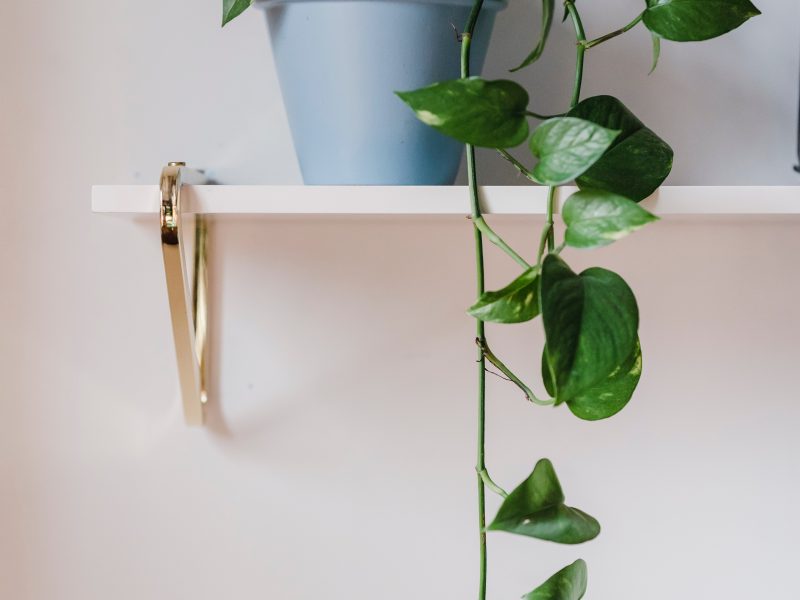
Light Requirements for a Devil’s Ivy
Devil’s Ivy will thrive in all kinds of light conditions, from shady corners to bright windowsills. Be a little careful when it comes to direct light as this can burn the leaves, especially in the hot summer months where the sun is at its most intense.
When growing in lower light conditions, you may find that the new leaves appear less variegated. This can happen as there is less chlorophyll in the new leaves. Low light won’t impact its overall health but will simply make the leaves less variegated.
Pothos Plant Watering Requirements
On average you should be watering your Pothos plant once a week during summer and slightly less in winter. This is because the potting mix will take longer to dry out in colder temperatures so you won’t need to water as frequently or as deeply as in the hotter months of the year.
The best thing about the Devil’s Ivy is that it is very adaptable when it comes to watering which is why they are really easy to care for. The occasional over or underwatering won’t kill it so just make sure that you check the moisture of the soil before watering and give it some time to dry out in between.
Luckily Devil’s Ivy plants are quite tolerant of soggy or dry soil so you don’t need to constantly worry about if you are watering your plant enough. Use a moisture meter to monitor how quickly the soil dries out and find a routine that works for your plant.
Best Soil for a Pothos Plant
A regular high-quality houseplant potting mix should suffice for your Devil’s Ivy plant but try to get a mix that contains perlite. This is a great ingredient for adding well-draining qualities to the potting soil and is also helpful in aiding aeration too.
If you can’t find a potting mix that already contains perlite, you can also buy it separately and add it to your soil.
Devil’s Ivy Temperature Requirements
The ideal temperature range for a Pothos plant is between 65-80°F (18-26°C). Although they do prefer warmer environments, they can adapt to slightly cooler temperatures if required. Growth may just be a little slower and your plant may become more susceptible to issues such as brown leaves and leaf drop.
The main takeaway when it comes to temperature requirements for your Devil’s Ivy is to avoid extremes. Make sure not to place your plant somewhere that is exposed to cold drafts. This could be next to drafty windows and doors but also near air conditioning units in summer. Although the refreshing blast of cool air might be welcomed by you, it can cause damage to your plant as the potting soil will stay soggy for longer and the leaves may freeze.
But it’s not just cold extremes that need to be avoided as hotspots can also be damaging to your plant. Avoid placing your Pothos within one meter of a heating vent, radiator or cooker as the heat can dry out the leaves, causing brown spots, patches and even entire leaves.
Monitoring temperature is really easy to do with a digital thermometer so we highly recommend you pick one up if you don’t already have one. They will allow you to spot any extremes before they start causing issues for your plant.
Devil’s Ivy Fertilizer Requirements
Despite being fast-growers, the Devil’s Ivy plant doesn’t need regular fertilization. Apply a well-balanced 10-10-10 fertilizer once every 1-2 months during spring and summer.
We prefer to use a water-soluble liquid fertilizer as this gives a little bit more control over the frequency and strength. For larger plants, you can often use the recommended fertilizer amount given on the bottle but for younger plants, you should halve that amount. This helps to avoid over-fertilization which can lead to yellow leaves and ironically a lack of new healthy growth.
It’s important to note that fertilizing your Devil’s Ivy is completely optional and you will still see plenty of new growth without it as long as the other care and environmental factors are right.
Ideal Humidity Level for your Devil’s Ivy
Your Devil’s Ivy will be able to adapt to the natural humidity level of your home but they will thrive if this is boosted a little. The ideal humidity range for a Pothos is between 45-60% humidity.
If the air is too dry for extended periods of time, it can cause brown leaf tips, spots or edges to develop. Boosting the humidity, however, is easy as there are several cheap and simple ways to do it.
Misting your plant a couple of times a week is a great way to boost the humidity. Just make sure that you mist in the first half of the day to leave enough time for the water droplets to evaporate off your plant. If the leaves are still damp when the temperature drops at night, the risk of leaf rot increases.
Another great way to increase the humidity is by moving it to either the bathroom or kitchen (given there is some natural sunlight). These two rooms tend to be slightly more humid than the rest of your home due to the steam released when showering and cooking.
Our last recommendation is to invest in a humidifier. They are small affordable devices that will keep a nice stable humidity level around your humidity-loving plants. Have any other humidity-related questions? Find out more in our humidity guide.
Propagating Pothos Plant
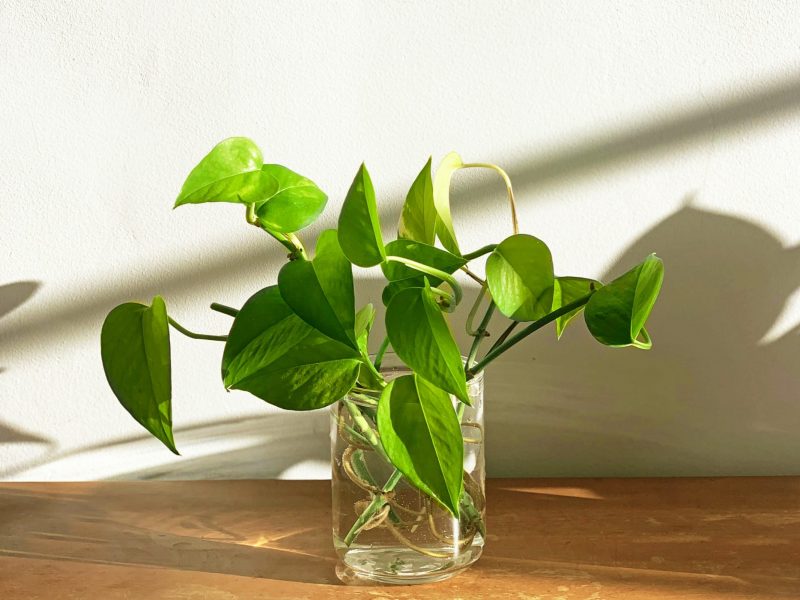
Propagating your Devil’s Ivy
Propagate a Devil’s Ivy using vine cuttings and make sure that each section contains at least one or two nodes (the part of the stem where the leaf shoots out from). You then need to put the cuttings in fresh water and place them somewhere where they will receive bright but indirect light. Direct light can be too harsh for the young cuttings and low light will halt the speed of root growth.
Make sure to refresh the water every few days and then after a few weeks, you should start to see new roots forming. Pothos plants are quite quick compared to a lot of other plant types at growing new roots so this should be fairly straightforward.
Once the roots are a few inches long, they are ready to be planted into soil and you can resume your normal Pothos care routine. They can either be added into the mother plant to create a bushier plant or potted separately to create a new plant.
Repotting your Devil’s Ivy
Pothos plants can survive for quite a long time in the same pot, so don’t worry too much about repotting. On average, you may want to do this every 2-3 years.
Give your plant a regular check over to spot any signs of a rootbound root system. These signs include roots growing out of the bottom of the drainage holes or growing out of the top of the pot. If you remove the plant from its pot, a rootbound root system will be very tightly coiled and there won’t actually be much soil left in the pot.
When you do upgrade the size of the pot, make sure not to go much bigger as this can cause two issues. Firstly, it can make your plant unstable as the roots are looser and secondly, as there will be a lot more soil in the pot, it will take longer to dry out. This increases the risk of root rot and consequent issues.
Devil’s Ivy Toxicity to Humans and Pets
Devil’s Ivy plant is mildly toxic to pets and humans as it contains insoluble calcium oxalate crystals. When ingested, it can cause mouth, tongue, throat and stomach irritation. It can also cause vomiting and diarrhoea and excessive drooling in dogs and cats.
The sap can also cause irritation if it comes into contact with your eyes so make sure to wear gloves when propagating and pruning your Pothos.
Treating and Preventing Pests
Although a pest infestation is rare watch out for mealybugs, scale insects, spider mites and thrips that may infest your Pothos. They can start to cause issues such as small brown or yellow spots, holes in the leaves and leaf drop. If you spot any issues with your plant, always rule out pests as the first thing as the damage is quick and can be deadly.
If you do spot any signs of pests (or pests themselves – use a magnifying glass to spot them), isolate your plant from all other plants immediately. You should then check over all of your houseplants to see if the issue is only isolated to your Pothos.
There are several steps needed to successfully treat a pest infestation. First of all, remove the worst affected leaves. This will primarily reduce the size of the infestation which will make it slightly easier to treat.
The next step is to wash down your plant fully and flush out the soil to remove as many pests as possible. Replacing the soil can also help reduce the numbers but make sure to dispose of it safely. You should then start a treatment of neem oil and an insecticide to fight the pests.
The number 1 thing to know with pests (and most other issues too) is that catching and treating the issue early will make successfully treating it a lot easier. Because of this, make sure to give your Pothos a thorough check-up once a month.
Devil’s Ivy Common Problems
Why is my Devil's Ivy developing yellow leaves?
Yellow leaves on a Pothos usually indicate watering issues, most commonly overwatering. Check the moisture of the soil to see whether you are under or overwatering your Devil’s Ivy. Alongside waterlogged soil, an overwatered Pothos will also have very soft roots that may be black/ dark brown in colour. An underwatered Pothos on the other hand will have light brown crispy roots.
It’s also important to note that yellow leaves can be a result of natural ageing. Over time some of the leaves on your Devil’s Ivy may turn yellow and drop off but this is nothing to worry about. It’s simply part of the natural ageing process and happens when your plant prioritises new larger leaves.
Be sure to monitor the yellow leaves as natural ageing should only mean a couple turn yellow each year. If the rate of yellowing increases, this also suggests watering issues are to blame.
Why is my Devil’s Ivy developing dry crispy brown leaves?
Dry brown leaves on your Pothos can be a sign of either underwatering, low temperatures or low humidity. Watering issues are the most common if the entire leaf has turned brown so inspect the soil and root system for clues.
If underwatering is the cause of the brown leaves, adjust your watering habits so that you are either watering more frequently than before or more deeply each time.
If the leaf has smaller brown patches or edges then humidity or temperature may be the culprit. Use a digital thermometer and humidity monitor to check for extremes and adjust the environment accordingly.
Why does my Devil’s Ivy have brown leaf tips?
The most common cause of brown leaf tips on a Devil’s Ivy is a lack of humidity. Pothos plants need a humidity of around 45-60% so make sure to boost the humidity if needed. There are several easy ways to do this including misting, using a pebble tray, moving to the bathroom and investing in a humidifier.
Why are the leaves on my Devil's Ivy curling?
Curling leaves on your Devil’s Ivy/ Pothos plant are often caused by either watering or lighting issues. Check the moisture of the soil as well as how much light your plant is getting throughout the day and adjust the care/environment.
We would always start investigating watering issues and checking the soil as curling their leaves is one of the main mechanisms that Pothos plants use to reduce moisture lost from their leaves.
Why is my Devil's Ivy drooping?
If you notice the leaves on your Devil’s Ivy are drooping and looking a bit limp this is often due to underwatering. Check the soil to make sure that it’s dry as you don’t want to increase watering to solve drooping leaves if this isn’t the reason. If the issue has been going on for a while, you may also see that the roots have started to turn crispy. This will prevent moisture from getting to the leaves, causing the plant to droop.
To solve the issue of drooping leaves, give your Pothos a good soak so it can slowly start to take in more moisture and adjust your watering schedule moving forward. You either want to water your plant more often, or increase how much water you give it each time.
Why is my Devil’s Ivy leggy?
The most common cause of a leggy Pothos plant is a lack of sunlight. This can be quite natural during winter and you’ll see larger gaps on the vines between each leaf.
The best thing to do to solve the issue and prevent future growth being leggy is to relocate your plant so that it gets more sunlight. Avoid intense direct sunlight during summer as this can dry out as well as burn the leaves but find somewhere with bright, indirect light.
The leggy vines on your Pothos won’t do any damage to it health-wise but you may choose to prune the leggy sections for aesthetic reasons. It can be a good idea to propagate those vines and pop them back into the mother plant if they are healthy.
Why is my Devil’s Ivy wilting?
Wilting leaves on a Pothos are either due to watering issues (overwatering or underwatering) or heat stress. Check the soil to determine if the root system is damaged from watering issues and adjust your watering routine if it is.
When it comes to temperature, if your Pothos is in a hotspot, then the leaves can dry out and wilt down. This can happen if your plant is too close to a window during summer, or near to a cooker, heating vent or radiator. Use a digital thermometer to check the environment and relocate your plant if needed. The ideal temperature range is between 65-80°F (18-26°C).



